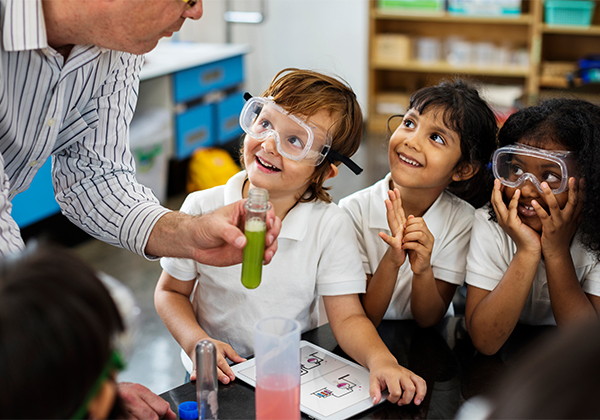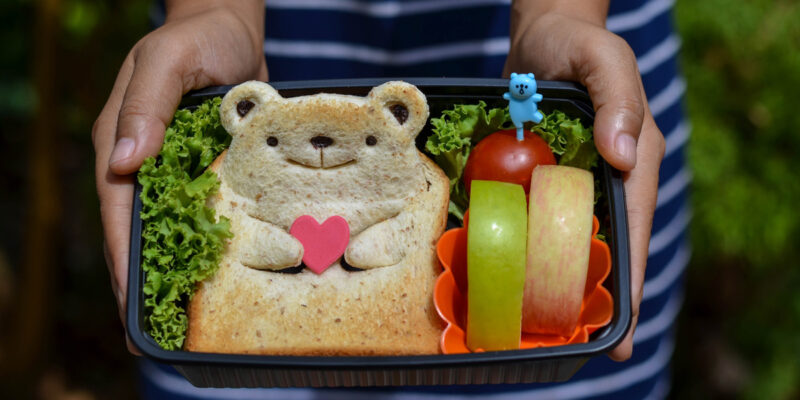Showering and getting ready for the day:
We experience the chemistry of cosmetics and skincare every time we get ready in the morning, from our shampoos and soaps in our showers to the personal care products and makeup we apply before go to school or work. On sunny days, titanium dioxide plays a critical role in protecting and our skin from the damaging sun UV rays and other environmental factors. Titanium dioxide is used in a variety of personal care products, most notably as a crucial sunscreen ingredient.
Surfing the web with computers and electronics:
Fun chemistry experiments for kids aren’t the only way to learn about how different chemicals are used in everyday life. Students today increasingly use computers, tablets, and other electronic devices to research class assignments, write papers, and even take tests. Electronics of all kinds depend on chemistry–from plastic-coated wiring and silicon computer chips, to scratch-resistant polycarbonate computer screens.
Organizing and protecting school supplies and devices:
Many kids’ backpacks have plastic padding to help protect against damage. Laptops and tablets often have scratch-resistant polycarbonate computer screens to enable them to withstand the rough and tumble treatment kids dish out on a daily basis.
Today, backpacks can be made entirely of plastic materials, right down to the zippers and pull. For younger students, a transparent vinyl backpack can be a great choice because they are easy to clean and kids can check to see that all of their gear is in the backpack. Backpacks made from plastics like polyvinyl chloride (PVC) also are water resistant and resist bacteria growth and mildew.
Keeping lunches fresh:
Insulated lunch boxes are lightweight and make lunches easy to carry, even for the youngest students. Reusable containers like thermoses and water bottles are shatter-resistant and convenient for everyday use because of the unique chemical compounds found in these common school items. Many kinds of plastics packaging are airtight – from zip top baggies to resealable containers – keeping foods and snacks fresh and delicious from morning until lunchtime. Collapsible lunch boxes using silicone chemistry are lightweight and space saving.
Helping with creativity and making art:
Art class could be considered a cousin of chemistry when it comes to school supplies. Crayons come in hundreds of colors, but their chemical makeup is quite simple. The two basic ingredients in most crayons are paraffin wax (also used to make candles) and color pigment. Paint pigments are created with specific chemicals in order to achieve vibrant, lasting color; cadmium, for example, can be used to create yellow, red, green and orange paint.
Pens can contain white ink (which contains titanium oxide), metallic gold ink (copper-zinc alloy) and carbon black. Carbon black, a pigment derived from coal and oil, is an essential part of black ballpoint pen ink. Basic chemistry concepts for kids can be explored through many outlets, not just science class.
Supporting young athletes and sports:
Another interesting place to discover chemical compounds in school supplies is in the athletic department. Bike helmets and other sports gear made from different types of plastics help protect kids from injury on the playing fields.
A helmet lining made from expanded polystyrene in different layers and densities enables the helmet to absorb impact, while the helmet’s shell – often made with polycarbonate – is strong, but lightweight and shatter-resistant, adding even more protection. Got a track and field star in your family?
Polyurethane in the midsole of sneakers and running shoes adds stability and cushioning that doesn’t flatten out over time. The outer soles of running shoes are often made of a thermoplastic rubber material, which provides support and shock absorption.
Learn more about the role of chemistry in sports textiles, performance apparel and sports equipment.
Providing protection from the weather:
Rain jackets and other gear enhanced with fluorinated polymers are water-repellent and stain- and abrasion-resistant to help children stay warm and dry through the school year. Thanks to chemistry, fabrics like polyester or nylon allow skin to breathe; moisture vapor can pass through fabric while repelling rain or snow on the outside of the jacket.
Thanks to the products of chemistry, students – and their teachers – can be ready for a successful year as soon as the school bell rings.
To further explore chemistry basics for students, check out some of our other stories on chemical safety here, including this video on Chemistry in the Great Outdoors.



